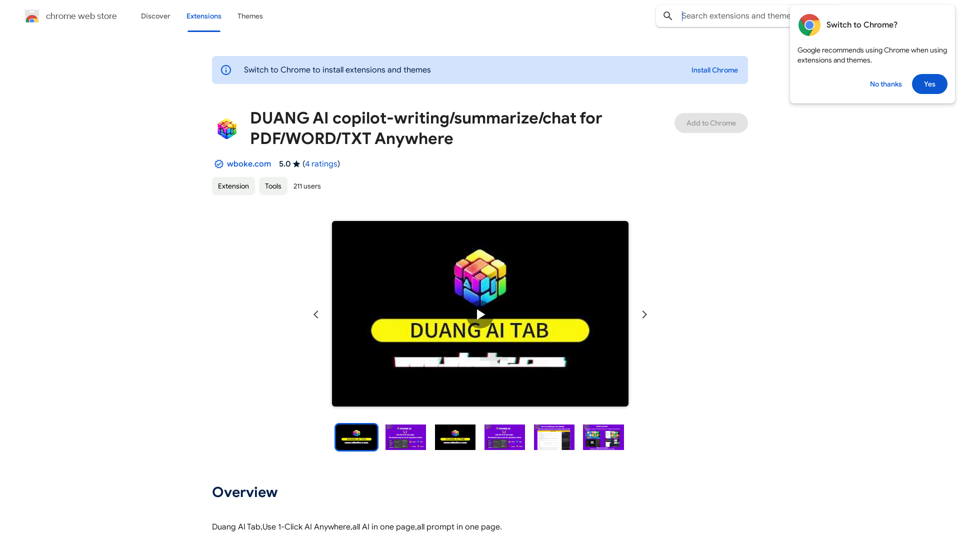SOAI is a cutting-edge voice control extension designed to revolutionize your computing experience. It enables users to interact with their systems using natural language prompts, eliminating the need for manual interventions. SOAI offers precision execution of tasks through voice commands, providing a seamless and effortless computing experience.
SOAI Extensions
soai Extension

Introduction
Feature
Voice Control Capabilities
SOAI empowers users to control their systems using voice commands, simplifying navigation and task execution. This feature enhances accessibility and efficiency in daily computing tasks.
Precision Execution Technology
The extension utilizes advanced technology to ensure that voice commands are executed with high precision. This eliminates the need for manual interventions, saving time and reducing errors.
Seamless User Experience
SOAI provides an uninterrupted computing experience, allowing users to focus on their tasks without distractions. The smooth integration of voice commands enhances productivity and user satisfaction.
Easy Installation and Setup
Users can easily install SOAI from the Chrome Web Store and configure it by setting up personalized voice commands and preferences. This straightforward process ensures quick adoption and customization.
Free Availability
SOAI is offered as a free extension, making it accessible to all users without any cost barriers. This allows widespread adoption of voice-controlled computing technology.
Customization Options
The extension offers customization features, allowing users to tailor their experience by setting up specific voice commands and preferences to suit their individual needs.
FAQ
Is SOAI compatible with all systems?
SOAI is designed as a Chrome extension, making it compatible with systems that support the Chrome browser. For specific system requirements, please check the extension details in the Chrome Web Store.
Can I use SOAI for complex tasks?
SOAI is capable of executing a wide range of tasks through voice commands. While it excels in common computing tasks, the complexity of tasks it can handle may depend on your setup and the specific commands you've configured.
How does SOAI ensure privacy and security?
As a voice control extension, SOAI likely processes voice commands locally or through secure channels. However, for detailed information about privacy and security measures, it's recommended to review the extension's privacy policy and documentation.
Is internet connectivity required for SOAI to function?
While basic functionality might work offline, some features of SOAI may require internet connectivity for optimal performance, especially if it utilizes cloud-based processing for voice recognition or command execution.
Latest Traffic Insights
Monthly Visits
193.90 M
Bounce Rate
56.27%
Pages Per Visit
2.71
Time on Site(s)
115.91
Global Rank
-
Country Rank
-
Recent Visits
Traffic Sources
- Social Media:0.48%
- Paid Referrals:0.55%
- Email:0.15%
- Referrals:12.81%
- Search Engines:16.21%
- Direct:69.81%
Related Websites

AI Copilot for Writing, Summarizing, and Chatting with PDF, WORD, and TXT Files Anywhere
AI Copilot for Writing, Summarizing, and Chatting with PDF, WORD, and TXT Files AnywhereDuang AI Tab, Use 1-Click AI Anywhere, All AI in One Page, All Prompts in One Page.
193.90 M

Iliad makes learning and remembering information intuitive. Transform Pages into a Personal Library of Knowledge: Discover the...
193.90 M

Online story planner, organizer, and writing app that allows you to create fictional universes, develop rich characters, and write amazing stories.
32.05 K

Flashka helps you learn by automatically generating flashcards and aiding you in the learning process.
287.56 K

An AI translation engine that understands context will provide a more user-friendly translation for websites, allowing everyone to have a reading experience in their native language.
193.90 M


